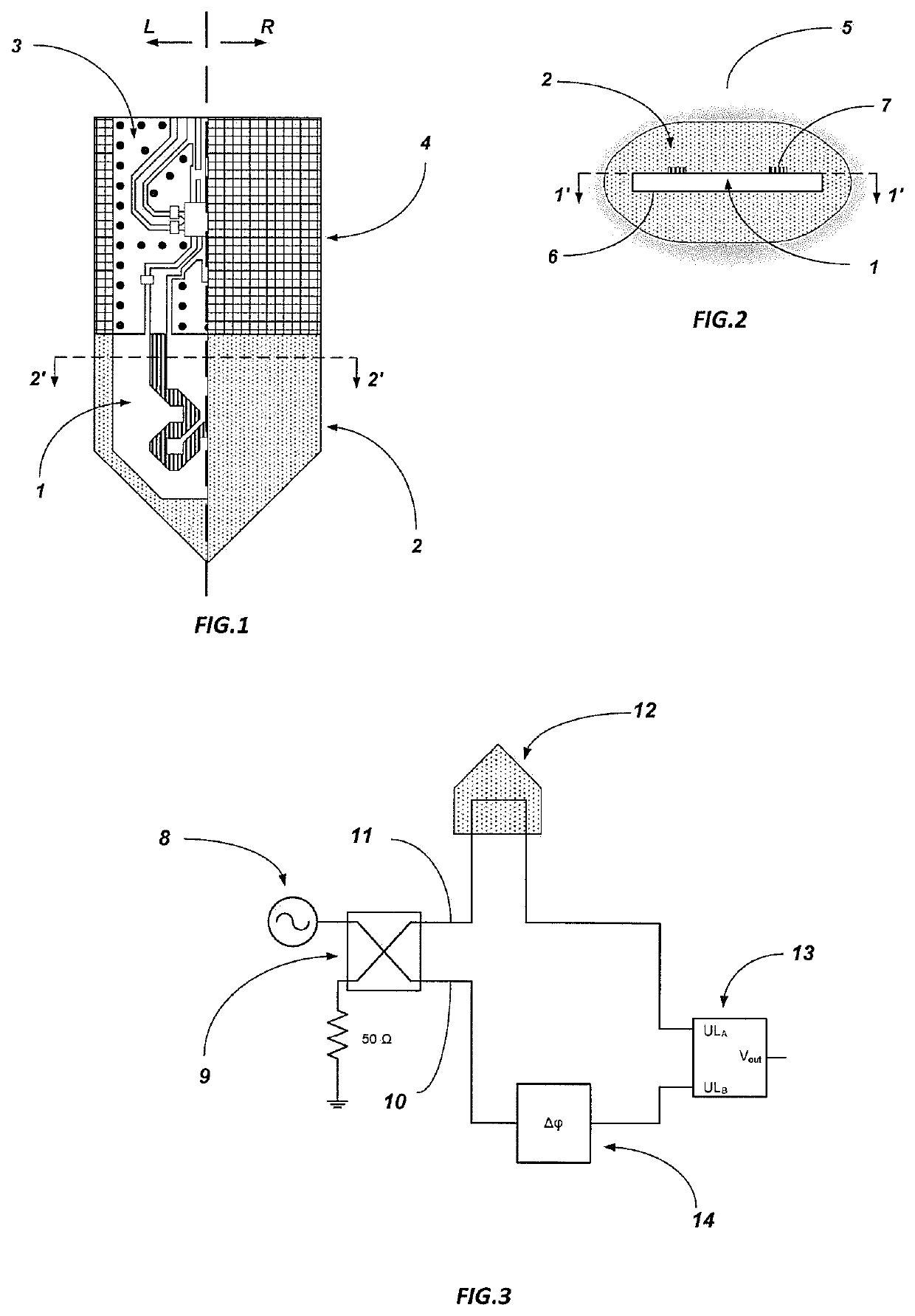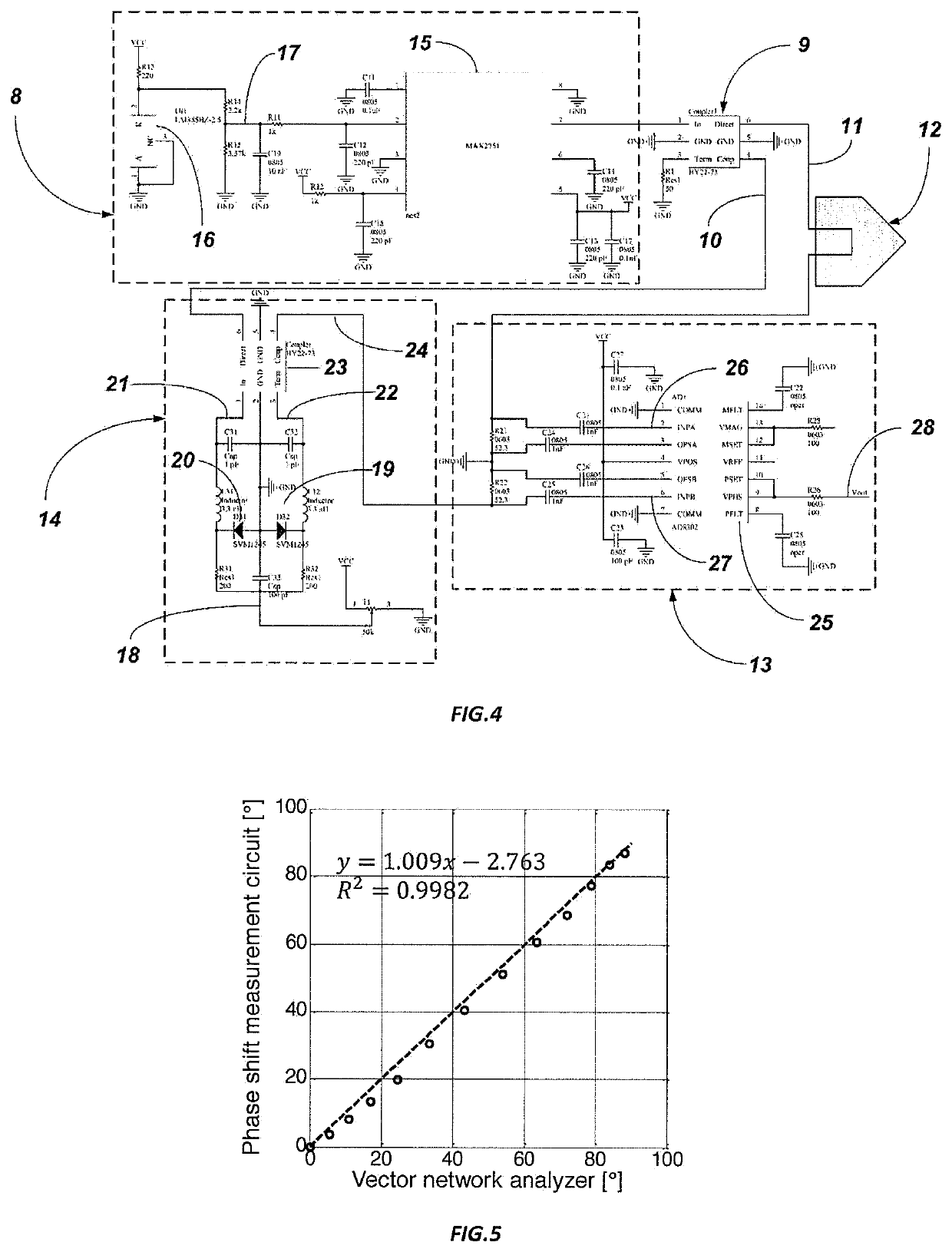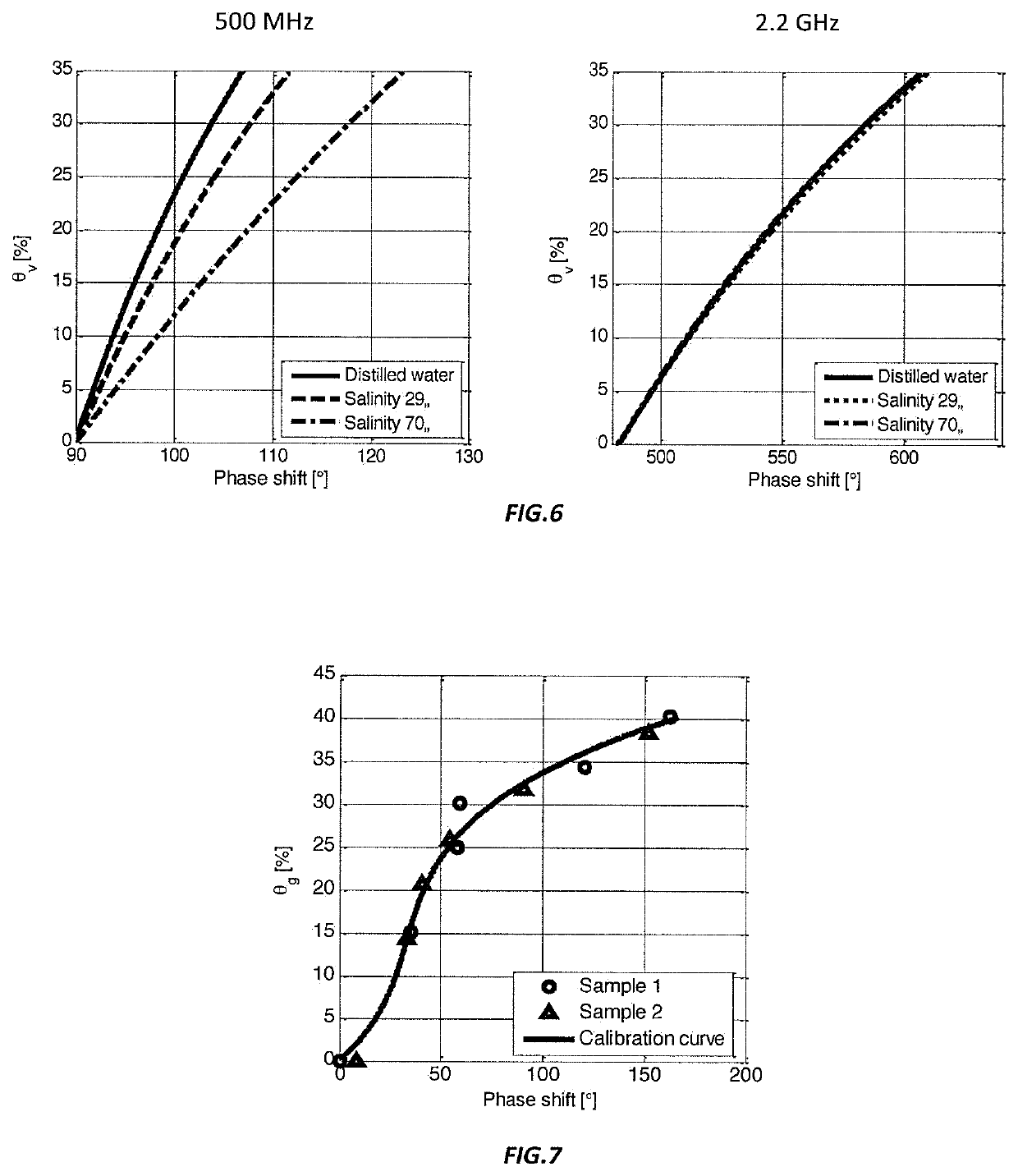Microwave soil moisture sensor based on phase shift method and independent of electrical conductivity of the soil
a soil moisture sensor and phase shift technology, applied in the field of soil moisture sensor based microwaves, can solve the problems of virtually impossible to eliminate the influence of soil conductivity, substantial reduction of stated issue, and inability to accurately measure soil moisture content, etc., to achieve long-lasting operation, reduce the need for calibration, and more immune to noise
- Summary
- Abstract
- Description
- Claims
- Application Information
AI Technical Summary
Benefits of technology
Problems solved by technology
Method used
Image
Examples
Embodiment Construction
[0028]Before disclosing the details of the invention, it is important to understand and stress that the present invention is not limited to the details of the construction illustrated and described below. The terms used in the description of the invention serve to understand the invention, and not for its limitations.
[0029]An example of the realization of the soil moisture sensor is shown in FIG. 1. The side marked with L is the cross-section of the sensor defined in FIG. 2 by 1′-1′, while side R is the exterior of the sensor. The basic components of the sensor are the sensor element 1, which is in direct contact with the porous matrix 2, phase shift measurement circuit 3, and the protective layer of the electronic circuit 4. The operating principle of the sensor and its components will be described in detail below.
[0030]The operating principle of the sensor is based on the phase shift method. The advantage of this method lays in the fact that phase measurement is less susceptible t...
PUM
| Property | Measurement | Unit |
|---|---|---|
| electrical conductivity | aaaaa | aaaaa |
| relative permittivity | aaaaa | aaaaa |
| frequency | aaaaa | aaaaa |
Abstract
Description
Claims
Application Information
 Login to View More
Login to View More - R&D
- Intellectual Property
- Life Sciences
- Materials
- Tech Scout
- Unparalleled Data Quality
- Higher Quality Content
- 60% Fewer Hallucinations
Browse by: Latest US Patents, China's latest patents, Technical Efficacy Thesaurus, Application Domain, Technology Topic, Popular Technical Reports.
© 2025 PatSnap. All rights reserved.Legal|Privacy policy|Modern Slavery Act Transparency Statement|Sitemap|About US| Contact US: help@patsnap.com



